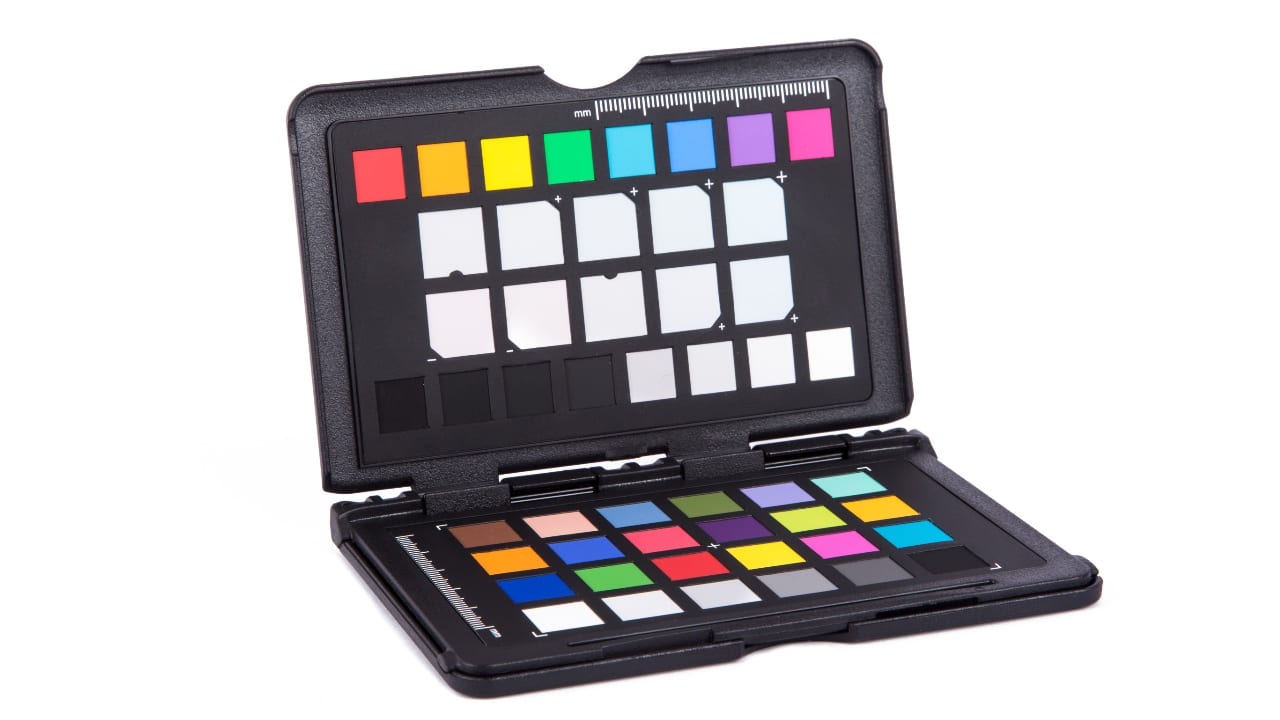
Color checker cards that allow us to maintain accurate colors through post are part of the industry scenery. Nigel Cooper, though, thinks they are no longer needed in today’s digital workflows.
I come from a film background by way of Hasselblad and Mamiya medium format cameras and Nikon & Canon 35mm SLR cameras loaded with color neg, transparency, and various black and white film stocks. I also had a nice darkroom stocked with lovely smelling developer, stop bath, and bleach fix chemicals with trays to deal with anything up to 12x16-inch fiber-based prints with an assortment of cut-out dodge and burn cards on thin wires and a kettle with plenty of tea bags on hand for making up my own, preferable, alternative to sepia toner. I also had heated tanks for Cibachrome printing from Fujichrome 50-ASA transparency film.
Of course, I shoot on a Canon full-frame mirrorless system these days, having previously owned a Sony Alpha mirrorless system and Canon DSLR full-frame gear before this. This leads me into why I don’t see the point of color checker cards anymore: The latest digital cameras, especially mirrorless, already have incredibly accurate colors.
Manufacturers such as Hasselblad, Canon, and Nikon, for example, have superb color science with amazing natural color systems, so why mess with that? What modern camera makers do with their own blend of color science and sensor technology is phenomenal, so I can’t understand why anybody would want to start tinkering with that. An audio equivalent example would be buying a 32-band graphic equalizer for your home Hi-Fi system just so you can mess with all the superb work that a top Deutsche Grammophon recording engineer put into the mix and final master of a recording of Beethoven's Pastoral Symphony – you wouldn’t do it, at least not if you know anything about music.
Modern-day nonsense
For me, color checkers are nonsense in 2024 because re-calibrating your camera sensor’s already carefully tuned colors for every shoot is just too much, and here’s why. In a studio situation, messing with the camera manufacturers’ carefully calibrated scientific standards won’t gain anything with regard to more accurate colors because each of the strobes in any given studio shot will have a slightly different color tinge anyway. A softbox will have a different color shift to a silver beauty dish. The latter will have a different color temperature to a white reflective umbrella, so if you have four strobes with four different lighting modifiers, you’d have to place and aim the color checker card at all four of them and then try and come up with an average - impossible.
Given that we post-produce our images (even at high-end advertising standards for, say, a car maker or clothing manufacturer) and adjust levels, brightness, white balance, saturation, colors, and RGB curves, makes using a color checker even more futile.
I recently tried using a color checker card, and I prefer the colors straight out of my camera, a Canon R6 MKII, whether it’s one of Canon’s custom color profiles in JPEG mode or a RAW conversion via Capture One (my software of choice). The results I’ve had from the color checker card (after exporting a 16-bit TIFF file, creating a color profile, and re-launching Capture One) are either relatively small or just not to my liking. Also, given that post-production work typically involves color grading, it cancels out – big time – any tiny difference that using a color checker card might have once had, so there really is no point to this futile process anymore.
It could be argued that for museum reproduction work where the photographer is taking a photograph of a flat painting that using a color checker could have some benefit, but even here there is still room for inaccuracies, especially if using more than one strobe. However, the grey boxes on the color checker card are useful, and I’ll still use the color checker card for this, and this alone, to allow me to neutralize the image in post. But honestly, you might as well use a standard grey card for this, as they are way cheaper and larger too.
These aren’t just my thoughts and feelings on the subject, either. I know a few photographers who are at the top of their game working with Hasselblad cameras in studio environments doing big-budget jobs for big clients for big money, and it’s after talking to these photographers that I too decided to ditch using a color checker card before every new shot.
Tags: Production

Comments